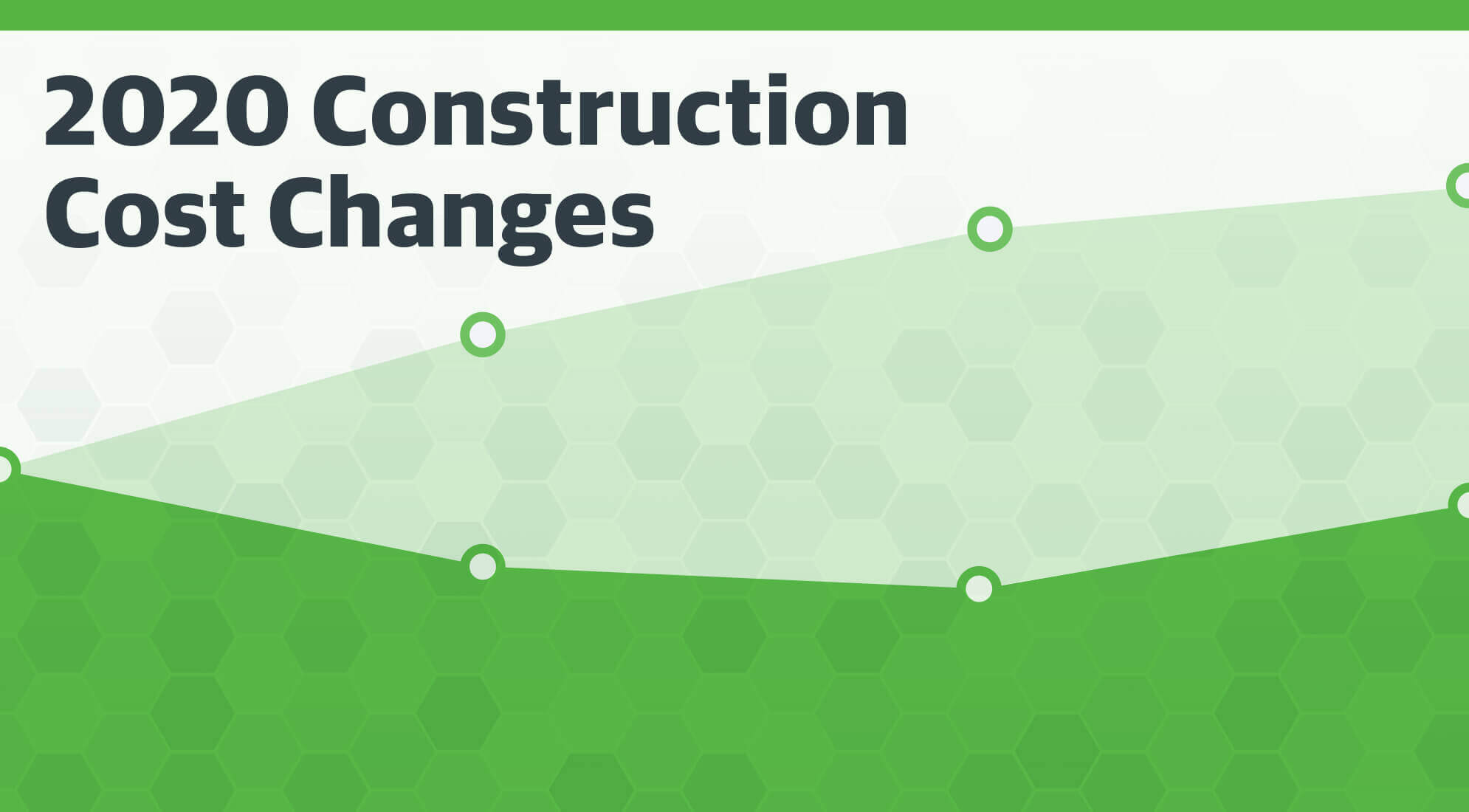If you have yet to watch our recent 2020 Construction Cost Changes webinar, we highly encourage you to do so now and read this blog post after. We know it’s unorthodox to ask you to do something else before you read a blog, but we think viewing the webinar will add to the value of this piece. In addition to providing context to the questions below, the webinar has a lot of other useful and relevant information about changes to our RSMeans data construction cost database for 2020.
After the webinar, we sat back down with two of our data experts, Principal Engineer Bob Mewis and Vice President of Data and Analytics Tim Duggan, to answer attendee’s questions about RSMeans data and construction cost changes coming to the industry this year. These are real questions from real webinar viewers – they could even be yours.
This blog post contains the five most popular questions, but we received many great ones. Click the play button to hear our experts answer every question submitted by webinar attendees!
1. How often do construction costs actually change, and how often is RSMeans data updated?
In a normal year, about 90% of construction costs experience some level of change. That includes costs for materials, labor and equipment. Some of those changes might be miniscule, dialing in at one tenth of one percent, while others might be as large as 10-20%. Changes in costs are largely dictated by fluctuations in supply and demand. And while economic factors such as tariffs can affect costs, they and inflation account for a relatively small portion of the material cost changes we see year-over-year.
2. How often is RSMeans data updated?
Because of the high volume of construction cost changes mentioned above, every bit of our cost data is reviewed and updated at least annually, though many of the more commonly used line items are updated on a quarterly basis. Our data engineers spend approximately 22,000 working hours each year validating our database. It’s a lot of work, but it’s how we stay on top of all of those changes to ensure you have the most up-to-date construction cost data when you need it.
3. What regional price differences can we expect for steel and copper in 2020?
Obviously, the current tariffs have raised the overall market price of steel products. For example, type 304 stainless steel sheets (28 gauge) have gone up in price from $4.66 to $5. That’s a 7% increase in price, which is significant enough that using last year’s cost data for steel sheeting could wreck your estimate. But these increases are felt across the whole nation. When looking at regional differences in steel prices, we find these are generally caused by local transportation costs. Steel is a heavy product that takes up a lot of space, so small discrepancies in shipping prices can add up quickly.
Copper prices, on the other hand, have remained relatively steady. There hasn’t been a significant uptick in material cost for copper beyond the expected inflation rate of about 1.5%. And because copper is lighter than steel, it doesn’t experience significant regional changes due to regional transportation costs.
Hear more about 2020 construction cost changes in this free on demand webinar featuring two of the minds behind RSMeans data.
4. How can I be more accurate on bid proposals?
Bid proposal accuracy depends on three things: the quality and clarity of the construction documents, how well you measured your quantity takeoff from those documents and whether you use the right tools to price labor, indirect costs and profit.
Everything starts with having clear construction documents. If the documents aren’t completed well, your ability to quantify materials and work will be negatively impacted. And no matter what tools you use for pricing, your bid proposal will be off the mark.
Indirect costs can be a challenge to figure out, and they vary greatly depending on the size of your company and the overhead costs it takes to run the company. However, there is a general rule you can use to estimate overhead for bid proposals. Add up total overhead costs for an entire year then divide the total by the amount of revenue you generate in an average year. The result is a percentage that you should add to the direct costs of each and every bid.
5. Do natural disasters affect material and labor costs?
Surprisingly, natural disasters don’t tend to affect material costs significantly. Even in the wake of recent disasters in Houston, New Orleans and various cities in Florida, local suppliers of construction materials didn’t change their prices much. The exception to this trend is when natural disasters devastate a local source of material, such as wildfires that destroy forests used for logging. In those instances, local markets respond with price increases because of supply and demand.
Where disasters do have a strong affect on costs is in the labor market. The amount of labor required after a disaster to demolish and rebuild is second to none, which the local labor force can’t handle on its own. So the demand for labor hours goes up drastically, and the price for work responds accordingly. Workforces from nearby markets will also join the rebuilding efforts, but this comes with increased overhead prices to account for travel to the disaster site.







